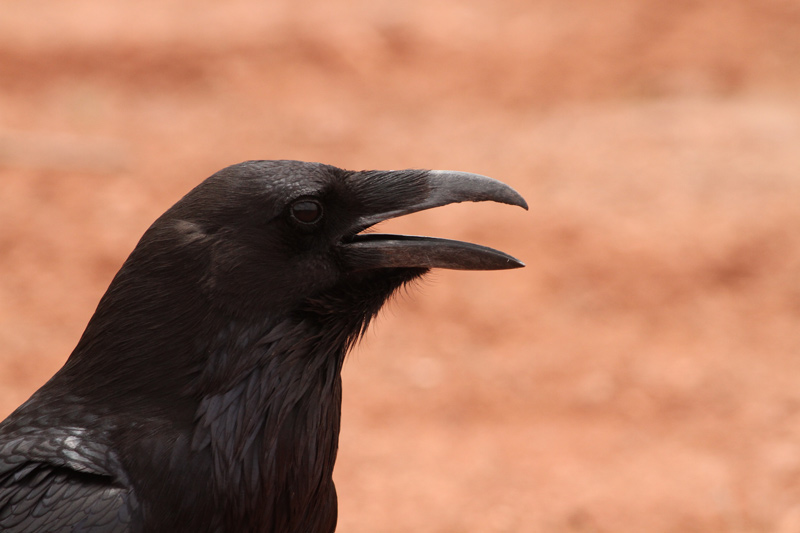
To establish a basis for comparison, I will begin by sending the three
photos we obtained of the
Common Raven. In my report, this is the bird referred to as the
Visitor Center bird. This bird, in my opinion, shows the classic
features of the bill of a Common Raven. Looking at the rictal
bristles, those of this bird appear to extend from the base of the
bill forward to a point I would call almost exactly half the bill
length. Besides length, look at the arrangement of the bristles on the
bill. They appear tightly packed close to the bill and the terminal
tips appear to cut off fairly evenly, yielding a "neat" appearance in
which the proximal half of the bill is tightly feathered while
the distal half is clearly and completely exposed.
The bill of Common Raven is said to be slightly longer and narrower
than that of Chihuahuan
Raven. That may be impossible to establish without direct
comparison, but this bird's bill fit the match for Common
Raven-longish and somewhat narrow.
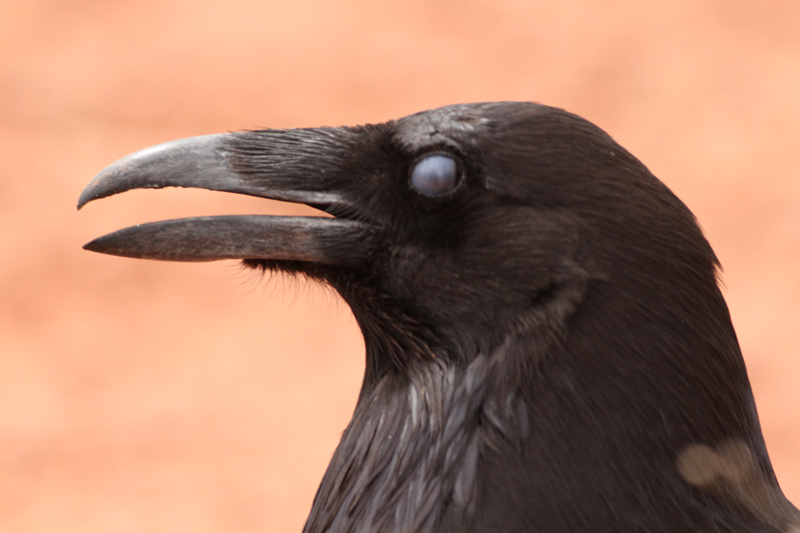
This is the second of the three
Common Raven shots we took (Visitor Center bird).
In some ways, this is the photo I should have started with. It's an
even closer-up image of the same Common Raven, but shows the bird with
its bill slightly more closed. This angle of the bird clearly shows
the tight, "clean" arrangement of the rictal bristles, their
more-or-less even length, and their termination at the halfway point
of the bill, as well as the featherless distal half of the bill and
the long, somewhat narrow profile of the bill.
I am not aware if head profile matters, but this angle seems to show a
gradual slope from the bird's skull to the start of the bill.
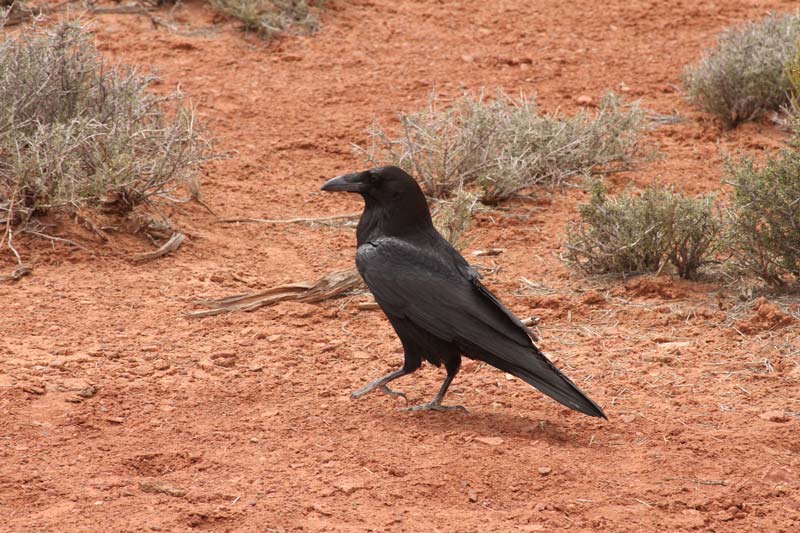
Image #3 is the last of the
Common Raven (Visitor
Center bird) images. This is an interesting shot because it was
taken from a little further away. However, if you use the zoom feature
on your photo viewer, you can still easily see the distinictive bill
qualities of this bird including the features of the rictal bristles
as described in the previous two messages.
At first glance, bill size and shape is harder to determine. I felt
that the length and thickness of the bill was not immediately
apparent, but the projection beyond the termination of the rictal
bristles and the low profile of the head, especially where it meets
the bill, provide sound basis for calling this bird a Common Raven.
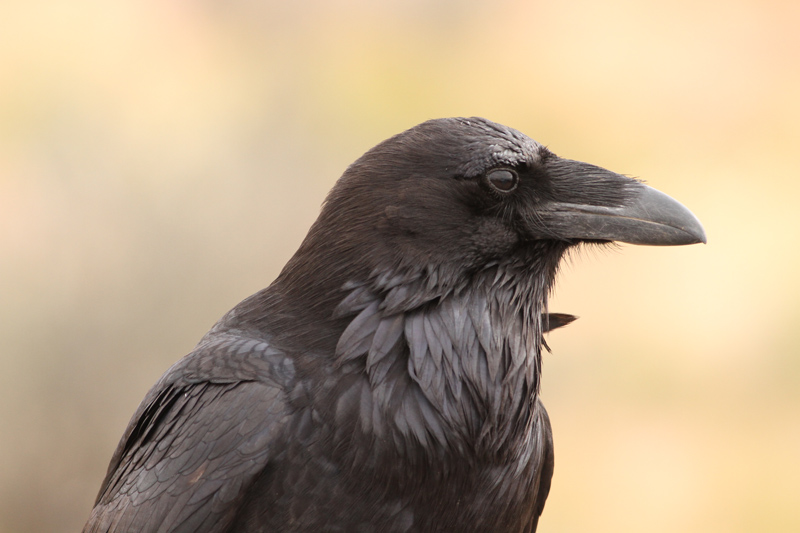
(#4)
The rictal bristles of this bird appear long and shaggy with an arrangement of the terminal tips of the bill appearing "unkempt" and terminating in a "less clean: fashion than those of the Common Raven. From the tips of the longer rictal bristles, the bill feathering appears, to my eye, to extend slightly beyond the halfway point of the bill, imparting a sense of the bill being shorter (which it probably is anyway). As for shape, this bird's bill is shorter and stouter than that of the Common Raven that appears in the first three photos. I am fully aware that these features are often difficult to discern without direct comparison (To let you know, we did compare the photos in succession as PowerPoint slides on the evening of the day the birds were photographed. To us, the bill size and shape were different.). Also, look at the head profile. The skull appears more peaked and seem to manifest a greater slope to the bill than corresponding features of the Common Raven.
On another note, I have not yet mentioned the length of the neck feathering. The Sibley guide indicates that Common Raven has shaggier neck feathering than Chihuahuan Raven. Until I looked at the field guide, I was not aware of this mark; nevertheless, if you look closely at the neck feathering of this bird, compared with those of the Common Raven in photo #3, you might be able to discern a difference. On the other hand, maybe I'm grasping at straws with this one.
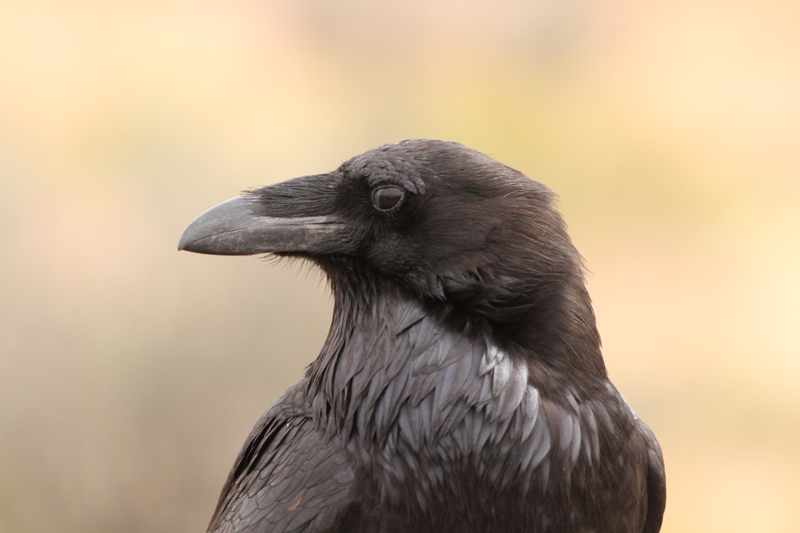
Photo B
(#5)
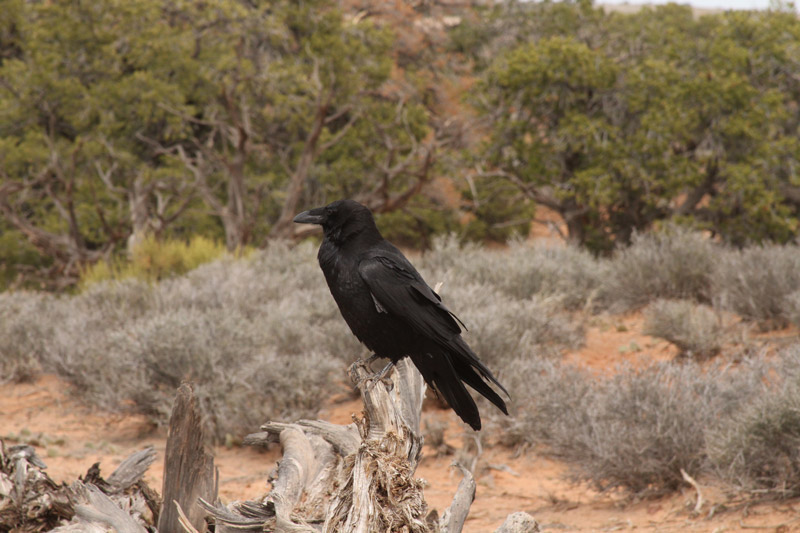
(#6)
I'd like to begin by correcting an error in my report. I reported the bird's perch by our touring van as a post, I believe, when in fact the bird is clearly perched on a tree stump. Anyway, this is a good picture of the bird as well. Notice that even without zooming, you can see hints of white feathering on the left side of the bird's body and neck, perhaps even a little bit over the eye. The features of the bill and rictal bristles are also apparent, especially after zooming in on those parts of the bird.
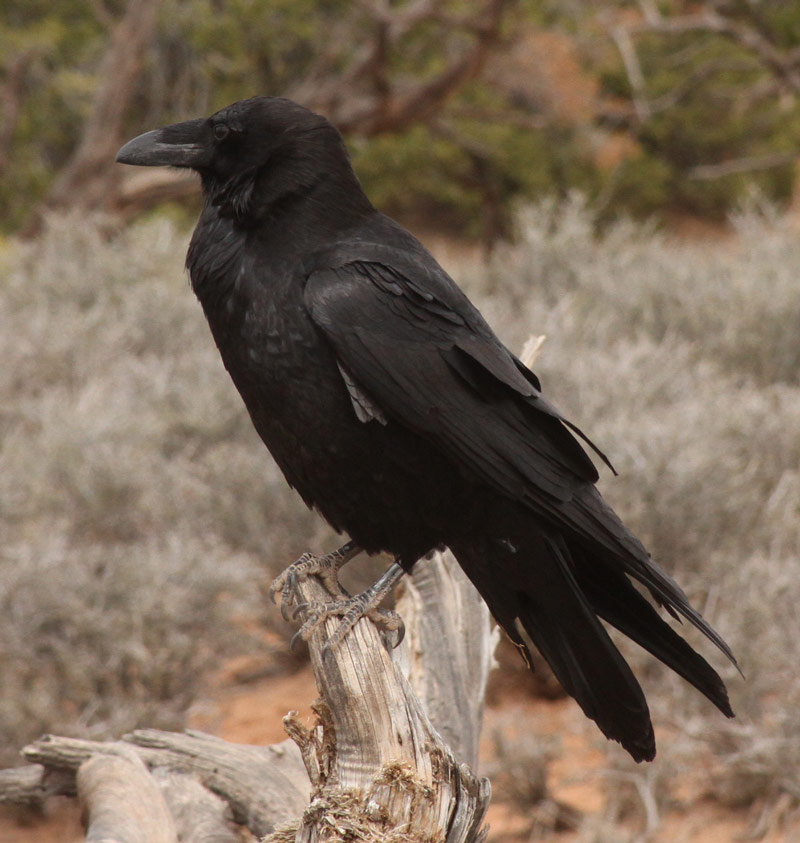
Photo C'
(#6a)
(This is Photo C or #6, cropped by the webmaster)